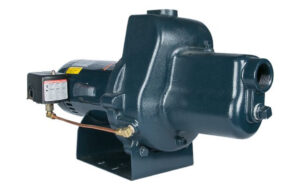
Why Installing a Well Tank is Crucial for Maintaining Water Pressure

The Importance of a Well Tank in Water Pressure
Key Benefits of Installing a Well Tank
- Maintains Consistent Water Pressure:A well tank reduces pressure fluctuations, ensuring smooth water flow even when multiple outlets are in use simultaneously.
- Reduces Wear on Your Pump: By storing pressurized water, the tank decreases how often the pump needs to run, reducing strain and extending its operational life.
- Prevents Water Hammer: Sudden changes in water pressure can cause loud banging noises, known as water hammer. A well tank minimizes these pressure shifts, protecting your plumbing system.
- Improves Energy Efficiency: Fewer pump cycles mean less energy consumption, leading to lower utility bills and a more sustainable water system.
- Provides Temporary Backup Water: In case of a pump malfunction, the tank holds pressurized water, offering a short-term solution until repairs are made.
How a Well Tank Works to Maintain Pressure
- Filling the Tank: The well pump fills the tank with water until it reaches a designated pressure level.
- Regulating Pressure: Compressed air inside the tank pushes water to your fixtures as needed.
- Pump Activation: Once the pressure drops below a certain threshold, the pump activates to refill the tank.
Selecting the Right Well Tank for Your System
- Diaphragm Tanks: Known for durability and minimal maintenance, these tanks use a diaphragm to separate air and water.
- Bladder Tanks: Featuring a replaceable bladder, these tanks are efficient and easy to repair.
- Air-Over-Water Tanks: Though less common, these are cost-effective but require regular maintenance to balance air levels.
Signs It’s Time for a Well Tank Upgrade or Repair
Conclusion
Search
Categories
Archives
- December 2024 (1)
- November 2024 (1)
- October 2024 (1)
- September 2024 (1)
- April 2023 (3)
- March 2023 (1)
- January 2023 (1)
- July 2022 (2)
- June 2022 (1)
- May 2022 (1)
- April 2022 (2)
Recent Posts


Why Installing a Well Tank is Crucial for Maintaining Water Pressure

How to Prolong the Lifespan of Your Well Pump: A Homeowner’s Guide
A well pump is an essential part of your home’s water system. By properly maintaining and caring for it, you can avoid costly repairs and unexpected breakdowns. Extending the life

Why Installing a Well Tank is Crucial for Maintaining Water Pressure
When your home depends on a private well for water, ensuring consistent water pressure is essential for comfort and daily tasks. Whether it’s washing dishes, taking a shower, or watering
Get a Quote Now
Recent Post

How to Prolong the Lifespan of Your Well Pump: A Homeowner’s Guide
A well pump is an essential part of your home’s water system. By properly maintaining and caring for it, you can avoid costly repairs and unexpected breakdowns. Extending the life

Why Installing a Well Tank is Crucial for Maintaining Water Pressure
When your home depends on a private well for water, ensuring consistent water pressure is essential for comfort and daily tasks. Whether it’s washing dishes, taking a shower, or watering

The Value of Routine Maintenance and Inspections for Your Well Pump
A well pump serves as the backbone of your water system, delivering a consistent supply of clean water to your home or property. However, like all mechanical systems, it requires

